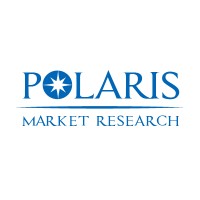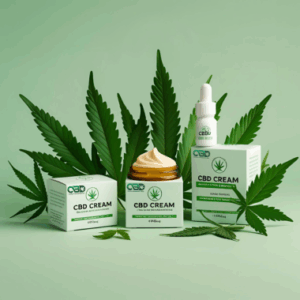The global glycols market is witnessing significant growth, driven by increasing demand across a range of industries, including automotive, pharmaceutical, food & beverage, and chemicals. Glycols, particularly ethylene glycol (EG) and propylene glycol (PG), have become indispensable raw materials in various applications, from antifreeze formulations to food preservation, industrial coolants, and more.
Global Glycols Market size and share is currently valued at USD 48.16 billion in 2024 and is anticipated to generate an estimated revenue of USD 89.80 billion by 2034, according to the latest study by Polaris Market Research. Besides, the report notes that the market exhibits a robust 6.50% Compound Annual Growth Rate (CAGR) over the forecasted timeframe, 2025 – 2034
Market Overview
Glycols are a class of organic compounds characterized by their two hydroxyl groups (-OH) and are primarily categorized into ethylene glycol and propylene glycol, both of which have a broad spectrum of uses across diverse industries. Ethylene glycol (EG) is primarily produced via the hydration of ethylene oxide, whereas propylene glycol (PG) is produced through the hydration of propylene oxide. Both glycols are known for their excellent solubility, low volatility, and resistance to freezing and corrosion.
These properties make glycols highly suitable for industrial applications, including antifreeze products, polyester production, paints, coatings, plasticizers, and pharmaceuticals. They also find significant usage in food-grade applications as humectants, stabilizers, and solvents. Additionally, propylene glycol is often used in cosmetics and personal care products due to its non-toxic and moisturizing properties.
In the automotive industry, ethylene glycol is an essential component in antifreeze mixtures, while propylene glycol serves as a safer, less toxic alternative in various formulations, such as brake fluid and automotive coolants. As the automotive industry transitions to more sustainable and eco-friendly solutions, the demand for propylene glycol, particularly in electric vehicles, is on the rise.
The increasing adoption of bio-based glycols, which are derived from renewable resources such as bioethanol, is expected to be a significant factor in market growth. The shift toward green chemistry and eco-friendly alternatives is driving innovation in glycol production, especially in the food, pharmaceutical, and chemical industries.
Market Segmentation
The glycols market is segmented based on type, application, end-use industry, and region.
By Type:
-
Ethylene Glycol (EG) – The most widely used glycol, accounting for the largest market share. It is primarily used in the production of polyester fibers, films, and antifreeze formulations.
-
Propylene Glycol (PG) – Gaining significant market traction due to its application in food, pharmaceuticals, cosmetics, and its lower toxicity profile compared to ethylene glycol.
-
Others – This includes specialized glycols such as butylene glycol and diethylene glycol, which are used in niche applications such as in plastics, paints, and certain pharmaceutical formulations.
By Application:
-
Antifreeze & Coolants – A major application of ethylene glycol in the automotive and industrial sectors. Both EG and PG are essential for maintaining optimal engine temperature and preventing freezing.
-
Polyester Production – Ethylene glycol is crucial in the production of polyester resins, which are used in textiles, bottles, and films.
-
Food & Beverage – Propylene glycol is used as a food additive in many processed food products, where it serves as a stabilizer, emulsifier, or carrier agent.
-
Pharmaceuticals & Cosmetics – Propylene glycol is a commonly used excipient in the pharmaceutical industry, as well as in cosmetic and personal care products like lotions, creams, and deodorants.
-
Industrial Applications – Both ethylene glycol and propylene glycol are used in chemical processes, such as solvent extraction, plasticizer production, and as additives in lubricants and paints.
-
Others – Includes applications in electronic fluids, de-icing fluids, and biodegradable products.
By End-Use Industry:
-
Automotive – For antifreeze, coolants, and brake fluids. The automotive sector remains the largest consumer of glycols, particularly ethylene glycol.
-
Chemicals & Petrochemicals – For production of polyester fibers, resins, plasticizers, and solvents.
-
Food & Beverage – As a humectant, preservative, and stabilizer in food products.
-
Pharmaceuticals & Cosmetics – Propylene glycol is widely used in pharmaceutical formulations and personal care products.
-
Electronics – Glycols are used in specialized electronic cooling fluids for heat management in devices such as computers and mobile phones.
Regional Analysis
The glycols market is geographically segmented into North America, Europe, Asia-Pacific, Latin America, and the Middle East & Africa. Each region shows distinct trends, driven by specific demand drivers and industrial activities.
Asia-Pacific:
Asia-Pacific is the dominant region in the glycols market, accounting for nearly 50% of the global market share. Countries like China, India, Japan, and South Korea are major consumers of ethylene glycol due to their large textile industries and rapidly growing automotive sectors. China is the largest producer and consumer of both ethylene glycol and propylene glycol, driven by its industrialization and significant investments in infrastructure.
The growing demand for bio-based glycols in the region is also boosting market growth, as governments promote green alternatives in the chemical industry. The expansion of the food and beverage sector in countries like India and Indonesia is expected to create new growth opportunities for propylene glycol in food-grade applications.
North America:
North America holds a significant share of the glycols market, with the United States being the major contributor. The market is driven by demand from the automotive and chemical industries, where ethylene glycol is used extensively in antifreeze and coolants. The pharmaceutical and food industries are also witnessing growth, driving the demand for propylene glycol.
Government regulations in the U.S. aimed at reducing the environmental impact of chemicals are pushing manufacturers toward sustainable and bio-based glycols. Additionally, the rising adoption of electric vehicles (EVs) is further increasing demand for propylene glycol, which is favored for its lower toxicity in automotive applications.
Europe:
Europe’s glycols market is characterized by a focus on sustainability and eco-friendly production methods. Germany and France are key markets for both ethylene and propylene glycol due to their strong automotive and chemical sectors. The region is also witnessing an uptick in demand for bio-based glycols, especially in the food and pharmaceutical industries, where sustainability is becoming a key focus.
Latin America:
Countries like Brazil and Mexico are the primary drivers of the glycols market in Latin America. The growth of the automotive industry and an expanding food & beverage sector in these countries are major contributors to market expansion.
Middle East & Africa:
The Middle East & Africa represents a smaller portion of the global glycols market but is experiencing steady growth, driven by investments in renewable energy, chemicals, and food industries. Saudi Arabia and the UAE are expected to be key growth centers due to the expansion of their chemical production and infrastructure.
Key Companies in the Glycols Market
- BASF SE
- China Petroleum & Chemical Corporation
- Dow Dupont
- ExxonMobil Corporation
- Huntsman International LLC
- LyondellBasell Industries
- Royal Dutch Shell plc
- Saudi Basic Industries Corporation (SABIC)
- Total S.A.
Explore More:
https://www.polarismarketresearch.com/industry-analysis/glycols-market
Conclusion
The glycols market is on a strong growth trajectory, supported by diverse applications in automotive, pharmaceuticals, food & beverage, and chemicals. As industries shift toward more sustainable and eco-friendly alternatives, the market is expected to evolve, driven by advancements in bio-based glycols and innovations in production technologies.
With robust demand across emerging economies in Asia-Pacific and Latin America, coupled with continued advancements in high-performance applications, the glycols market is set for sustained growth in the coming years.
More Trending Latest Reports By Polaris Market Research:
North America Automated Test Equipment Market
Biochip Companies: An effective procedure in decoding genes









